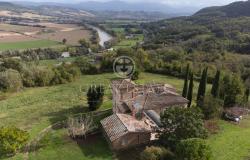 Antonio Canova's celebrated portrayal of a teenage Polish prince as Cupid is returning to Italy after over two centuries to take part in the celebrations for the 250th anniversary of the artist's birth.
Antonio Canova's celebrated portrayal of a teenage Polish prince as Cupid is returning to Italy after over two centuries to take part in the celebrations for the 250th anniversary of the artist's birth.
The marble masterpiece is the star of an exhibition opening on July 27 in the small northern town of Possagno near Treviso, where the great sculptor was born and is buried.
As soon as Canova completed the statue in 1790 it came to be considered an icon of neoclassical beauty.
He was inundated with requests for plaster-cast copies from many of Europe's most important noble families as a result.
The life-sized work immortalizes Prince Henryk Lubomirsky as the mythological god of love.
Canova started it in 1788. Progress was slow, in part because the young prince was shy about posing nude.
In the end, Canova used the teenager to render Cupid's head, especially his voluptuous lips, and based the body on ancient statues and other models.
The wavy-haired Cupid stares into the distance with his left hand resting on his bow.
The work features Canova's characteristic delicate rendering of the naked body.
On completion, the statue was whisked away to the Lubomirsky family home in Poland, Lancut Castle, where it has been housed ever since.
Canova's (1757-1822) art is held up by experts as the embodiment of the neoclassical notion of refined beauty, which contrasted with the theatrical excesses of the Baroque period before it.
The artist left his native Veneto as a young man and spent much of his life in Rome.
But the people of Veneto still claimed him as their own and by the time he was 38 he was receiving a stipend from the Venetian Republic.
Canova worked for popes, kings, bankers and Russian counts.
And he worked for Napoleon Bonaparte, whom he portrayed in various guises so flatteringly that in 1797 the emperor placed the artist under his protection.
The Lubomirsky sculpture will be on show at Canova's home in Possagno (Casa del Canova).
Visitors will be able to see the rest of the exhibition at the town's Gipsoteca Canoviana Museum.
This part of the show is made up of 29 works devoted to love and beauty.
They include a striking terracotta sculpture of Venus and Adonis, which Canova created in 1787, and a tender plaster depiction of Cupid and Psyche (1800).
Tickets to the show, which will run until November 1, will cost seven euros.









